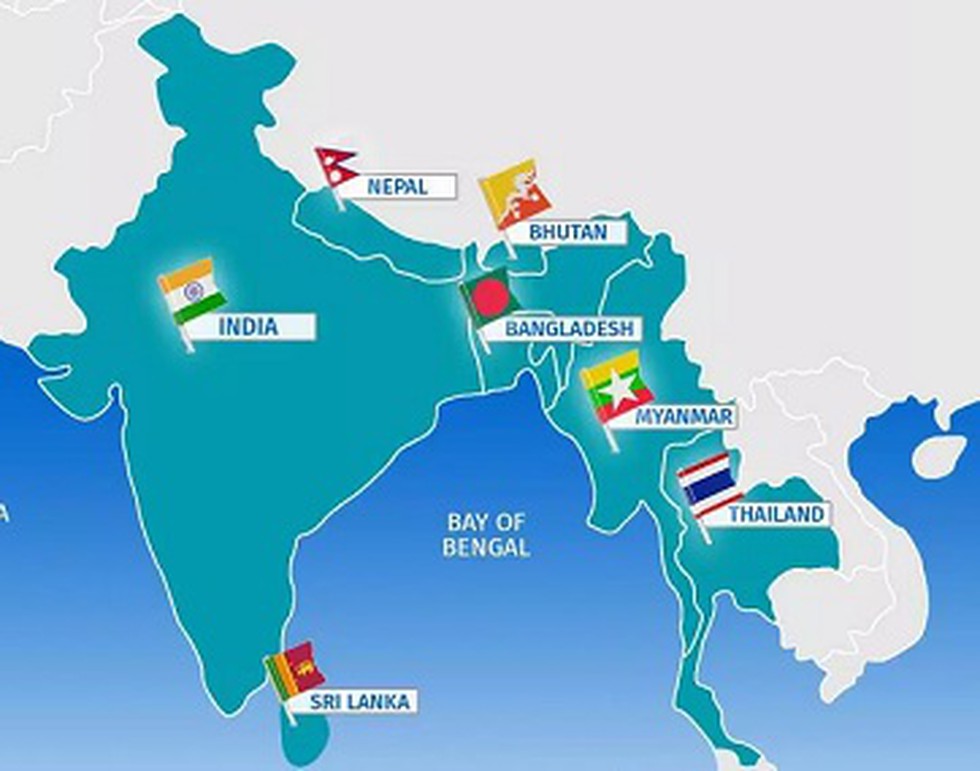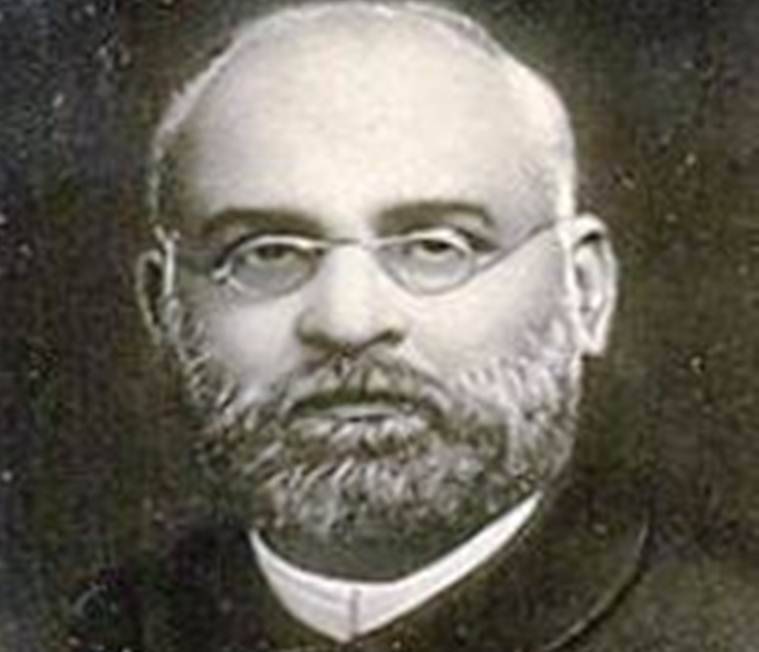CONTENTS
- 5th BIMSTEC Summit
- Shyamji Krishna Varma
- LIGO- India project
- IMEX 22
- Geological Heritage Sites
5th BIMSTEC Summit
Focus: GS II- International Relations
Why in News?
Prime Minister participated in the 5th BIMSTEC (Bay of Bengal Initiative for Multi-Sectoral Technical and Economic Cooperation) Summit hosted in virtual mode by Sri Lanka, the current chair of BIMSTEC.
Details:
- The Summit’s theme “Towards a Resilient Region, Prosperous Economies, Healthy People” captures the main current priorities of member states, and the efforts by BIMSTEC to develop cooperation activities that support member state’s programmes to deal with the economic and development consequences of the Covid-19 pandemic.
- The main outcome of the Summit was the adoption and signing of the BIMSTEC Charter, which formalizes the grouping into an organization made up of members states that are littoral to, and dependent upon, the Bay of Bengal.
- The Summit also saw considerable progress being achieved in the BIMSTEC connectivity agenda with the adoption of the ‘Master Plan for Transport Connectivity’ by Leaders which lays out a guidance framework for connectivity related activities in the region in the future.
- Prime Minister Modi along with other leaders also witnessed the signing of three BIMSTEC agreements which represent progress being achieved in ongoing cooperation activities:
- BIMSTEC Convention on Mutual Legal Assistance in Criminal Matters;
- BIMSTEC Memorandum of Understanding on Mutual Cooperation in the field of Diplomatic Training and
- Memorandum of Association on Establishment of BIMSTEC Technology Transfer Facility.
About BIMSTEC
The Bay of Bengal Initiative for Multi-Sectoral Technical and Economic Cooperation (BIMSTEC) is an international organisation of seven nations of South Asia and Southeast Asia:
- Bangladesh
- Bhutan
- India
- Nepal
- Sri Lanka
- Myanmar (South-east Asia)
- Thailand (South-east Asia)

- Bangladesh, Bhutan, India, Myanmar, Nepal, Sri Lanka, and Thailand are the member states dependent on the Bay of Bengal.
- Fourteen priority sectors of cooperation have been identified and several BIMSTEC centres have been established to focus on those sectors.
- The permanent secretariat of the BIMSTEC is in Dhaka, Bangladesh.
History of Formation
- In 1997, a new sub-regional grouping was formed in Bangkok under the name BIST-EC (Bangladesh, India, Sri Lanka, and Thailand Economic Cooperation).
- Following the inclusion of Myanmar on 22 December 1997 during a special Ministerial Meeting in Bangkok, the Group was renamed ‘BIMST-EC’ (Bangladesh, India, Myanmar, Sri Lanka and Thailand Economic Cooperation).
- In 2004, at the first Summit the grouping was renamed as BIMSTEC or the Bay of Bengal Initiative for Multi-Sectoral Technical and Economic Cooperation.
- There are 14 main sectors of BIMSTEC along technological and economic cooperation among south Asian and southeast Asian countries along the coast of the Bay of Bengal.
- Trade & Investment
- Transport & Communication
- Energy
- Tourism
- Technology
- Fisheries
- Agriculture
- Public Health
- Poverty Alleviation
- Counter-Terrorism & Transnational Crime
- Environment & Disaster Management
- People-to-People Contact
- Cultural Cooperation
- Climate Change
- The BIMSTEC uses the alphabetical order for the Chairmanship which has been taken in rotation commencing with Bangladesh (1997–1999).
Shyamji Krishna Varma
Focus: GS I- Personalities in News
Why in News?
The Prime Minister, Shri Narendra Modi has paid tributes to Shyamji Krishna Varma on his Punya Tithi
About Shyamji Krishna Varma :

- SK Varma (1857–1930) was an Indian revolutionary fighter, a patriot, lawyer and journalist who founded the Indian Home Rule Society, India House and The Indian Sociologist in London.
- He was a noted scholar in Sanskrit and other Indian languages.
- He pursued a brief legal career in India and served as the Divan of a number of Indian princely states in India.
- Founded the famous India House in London in 1904 which became the nerve centre and nucleus for India’s revolutionaries like Veer Savarkar, Madame Cama, Sardar Singh Rana, V V S Iyer, Lala Hardayal and Virendranath Chattopadhaya and Madhanlal Dhingra – was the political guru of Veer Savarkar, V V S Iyer and many other freedom fighters in this period
- He started the publication of a monthly journal called ‘Indian Sociologist’ which became a vehicle of revolutionary ideas.
- In February 1905, he established the Indian Home Rule Society to raise his voice against British domination in India. The monthly Indian Sociologist became an outlet for nationalist ideas and through the Indian Home Rule Society, he criticised the British rule in India.
- His resolution on India received an enthusiastic ovation from the entire conference. Shyamji’s activities in England aroused the concern of the British government:
- He was disbarred from Inner Temple and removed from the membership list on 30 April 1909 for writing anti-British articles in The Indian Sociologist.
- It was Shyamji who first advocated non-violent means of getting rid of the British and using withdrawal of cooperation with the colonial administration as the most effective weapon for this purpose. Gandhiji built on this and evolved Satyagraha as a tool to oust the British much later.
- Narendra Modi dedicated a memorial ‘Kranti Tirth’, to Shyamji Krishna Verma at the revolutionary’s ancestral town Mandvi in Kutch district
LIGO- India Project
Focus: GS III- Science and Technology
Why in News?
Union Minister of State (Independent Charge) Science & Technology; Minister of State (Independent Charge) Earth Sciences; MoS PMO, Personnel, Public Grievances, Pensions, Atomic Energy and Space, said that Government of India accorded In-principle approval for Laser Interferometer Gravitational wave Observatory (LIGO)-India project at an estimated cost of Rs. 1260 crore.
What is LIGO?
- It is a huge observatory that is used to detect cosmic gravitational waves and conduct research.
- The goal is to apply gravitational wave observations to astronomy research.
- Three gravitational-wave (GW) detectors are in use by the project.
- Two are in Hanford, Washington, in the northwestern United States, and one is in Livingston, Louisiana, in the south-eastern United States.
- One advanced LIGO detector will be moved from Hanford to India as part of the proposed LIGO India project.
About LIGO- India project:
- The Department of Atomic Energy (DAE) and the Department of Science and Technology are piloting it (DST).
- Three Indian research institutions will collaborate on the LIGO-India project: the Inter-University Centre for Astronomy and Astrophysics (IUCAA) in Pune, and the Institute for Plasma Research (IPR) in Gandhinagar and the Raja Ramanna Centre for Advanced Technology (RRCAT) in Indore, both of which are part of the Department of Atomic Energy.
Benefits for India:
- The project will provide scientists and engineers with unprecedented opportunity to delve further into the field of gravitational waves and to lead the world in this new astronomical frontier.
- The LIGO-India project would provide significant cutting-edge technology prospects for Indian industry, which will be involved in the construction of an eight-kilometer long beam tube at ultra-high vacuum on level ground.
- India will join the worldwide network of gravitational wave detectors once it is established.
- Establishing an observatory in India is particularly important since the longer the distance between observatories, the more accurate the detection of gravity waves will be.
IMEX 22
Focus: GS III- Security challenges
Why in News?
The maiden edition of Indian Ocean Naval Symposium (IONS) Maritime Exercise 2022 (IMEX-22) was conducted at Goa and in Arabian Sea from 26 – 30 Mar 22.
About IMEX-22:
- The aim of the exercise was to enhance interoperability in Humanitarian Assistance and Disaster Relief (HADR) operations among member navies.
- The exercise witnessed participation of 15 out of the 25 member nations of IONS.
- The participation included warships, Maritime Reconnaissance aircraft and helicopters from the Navies of Bangladesh, France, India and Iran.
- 22 Observers from 15 IONS member navies, namely Australia, Bangladesh, France, India, Indonesia, Maldives, Mauritius, Mozambique, Oman, Qatar, Singapore, Sri Lanka, Thailand, UAE and UK also participated in the exercise.
- The participants validated the IONS HADR guidelines and developed response mechanisms for providing HADR from sea to shore as well as for rendering assistance to ships and crafts in distress at sea.
- The Chiefs of Indian and French Navies witnessed exercises during the sea phase of IMEX – 22 and also attended the post exercise debrief.
- The exercise is seen as a significant stepping stone for regional navies to collaborate and respond collectively to natural disasters in the region and paves way for further strengthening regional cooperation.
About Indian Ocean Naval Symposium
- The Indian Ocean Naval Symposium (IONS), established in 2007, is a premier forum for cooperation and collaboration among navies of littoral states of the Indian Ocean Region.
- The forum has enabled discussions on regional maritime issues, promoted friendly relationships, and significantly improved maritime security cooperation in the Indian Ocean Region.
Geological Heritage Sites
Focus: Prelims, GS-I: Geography (Geographical Features and their Location)
Why in News?
Geological Survey of India (GSI) has identified two geological heritage sites in the Indian Himalayan Region of India.
Details:
| State | Name of the site | Location | Brief description of the site |
| Himachal Pradesh | Siwalik Fossil Park, | Saketi, Sirmur District | The Siwalik Fossil park displays a rich collection of vertebrate fossils recovered from the Siwalik rocks of the area of Plio-Pleistocene age. The deposition of Siwalik sediments took place in the narrow linear depression, called the ‘fore deep’, which started developing in front of the Himalayas since the inception of its uplift in the middle Miocene |
| Sikkim | Stromatolite bearing Dolomite / Limestone of Buxa Formation | Mamley, near Namchi, South District | The Geoheritage site at Mamley exposes lithounits of Buxa Formation, Daling Group of Proterozoic age. The dolostones are profusely stromatolitic (Precambrian algal structures). This site provides one of the rare examples of early life in Sikkim Himalaya. |
These two geological heritage sites of Indian Himalayan region are not on the verge of disappearance. These sites are preserved in the respective States.
Geo-heritage Sites:
- • Geo-heritage refers to geological features that are inherently or culturally significant and can be used for teaching or to provide insight into the earth’s evolution or history.
- • The parent organisation, the Geological Survey of India (GSI), is working to identify and safeguard geo-heritage sites and national geological monuments around the country.
- Marine Gondwana fossil park in Chhattisgarh; Siwalik vertebrate fossil park in Himachal Pradesh; Stromatolite park in Rajasthan; Pillow lava in Karnataka, Eparchaean unconformity and Tirumala hills in Andhra Pradesh; Lonar Lake in Maharashtra are only a few of these places.
About the Geological Survey of India (GSI)
- The Geological Survey of India (GSI) was founded in 1851 and it is an attached office to the Ministry of Mines.
- The GSI was founded for: (i) Conducting geological surveys and studies of India and (ii) Acting as a prime provider of basic earth science information to government, industry and general public, as well as the official participant in steel, coal, metals, cement, power industries and international geoscientific forums.
- The main functions of GSI relate to creation and updation of national geoscientific information and mineral resource assessment.
- These objectives are achieved through ground surveys, air-borne and marine surveys, mineral prospecting and investigations, multi-disciplinary geoscientific, geo-technical, geo-environmental and natural hazards studies, glaciology, seismotectonic study, and carrying out fundamental research.
- Outcome of work of GSI has immense societal value. Functioning and annual programmes of GSI assume significance in the national perspective.
- GSI, headquartered at Kolkata, has six Regional offices located at Lucknow, Jaipur, Nagpur, Hyderabad, Shillong and Kolkata and State Unit offices in almost all States of the country.



